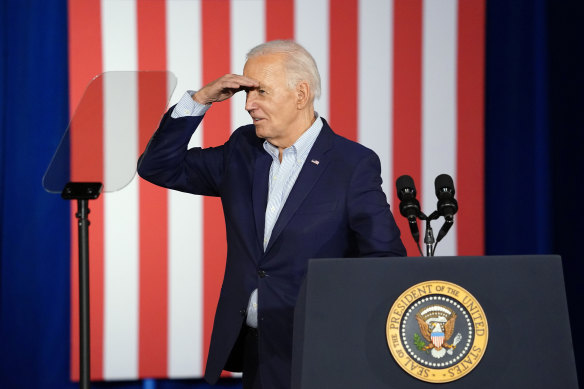
Investors must navigate these treacherous waters with great care. Well-timed calibrated Fed rate cuts and a soft landing can be a tonic for stock markets. It is a different matter if the Fed is behind the curve, cutting rates only after recessionary forces have metastasised.
In normal times, the worst adage in the investment universe is ‘sell in May and don’t come back until Labour Day’.
You end up chasing equities higher after months of frustration, bleeding money with two sets of transaction costs along the way. This year it may be worth paying the insurance premium.
‘Buy bonds’
Andrew Harnett from Bank of America says equity breadth on the S&P 500 is the worst since the depths of the global financial crisis in March 2009. Nvidia alone is holding up the universe.
His advice: “Buy bonds in the second half”; sell equities and credit as soon as the Fed starts to cut rates. Yes, the world is choking on the scale of bond issuance, but cyclical flight to safe havens trumps structural worries about solvency in a recession.
Loading
America’s economic slowdown has crept up on the world. Labour economists have been warning for months that the US jobs market is breaking down. The trouble always starts with millions of “marginally attached” workers, mostly off the radar screen.
Revised data from the Bureau of Economic Analysis now suggests that the labour specialists were right.
The rise in salaries and wages in the first quarter was less than half earlier estimates. The annual rate of economic growth has fallen from 4.8 per cent, to 3.4 per cent, to 1.3 per cent, over the last three quarters.
April was undoubtedly even weaker. The ISM manufacturing index fell further into contraction in May. Spending in restaurants has begun to buckle too.
Hollenhorst said the hiring rate is now the weakest for a decade. Firms are still hoarding labour – on lower hours – but once confidence snaps and the lay-offs start in earnest, the process takes on a life of its own. “The history of economic cycles suggests that this will not be smooth,” he said.

Joe Biden’s Inflation Reduction Act has not stopped the American boom from ending.Credit: AP
Simon Ward, from Janus Henderson, says there are two extra monetary effects to worry about. The US Treasury has cut reliance on short-term bills to fund the deficit, and this slows money growth.
The Treasury has also been draining liquidity by rebuilding its cash balance at the Fed. Both effects are likely to turn “significantly contractionary” with the usual lag.
The great American boom ended some time ago despite a turbo-blast from the Inflation Reduction Act.
The record does not look so good when you adjust for immigration. Real disposable income per capita is down 0.5 per cent over the last year. That may explain why so many voters are in such a bad mood.
America’s debt accumulation over the last seven years is akin to the costs of a world war.
Americans have depleted their excess savings from the pandemic and are now depleting their credit lines as well. The St Louis Fed says the percentage with delinquent credit card debt has hit double digits and is approaching the peak seen at the end of the dotcom bubble.
Delinquency rates have risen to 17.4 per cent in poorer zip codes, but have also soared to 7.4 per cent among the richest decile.
It is sobering to think that the US economy is running out of steam even though the personal savings rate has fallen to historical lows of 3.8 per cent of GDP, four percentage points lower than the pre-COVID average.
Loading
This is a coiled spring in waiting. Consumers will retrench suddenly and en masse as soon as they start to worry about their jobs.
It is even more sobering that a cyclically adjusted fiscal deficit of 6.7 per cent of GDP at the top of the cycle is no longer gaining traction. The fiscal multiplier has collapsed.
Torsten Slok from Apollo Global Management said the nominal deficit could blow through 10 per cent when recession hits.
America’s debt accumulation over the last seven years is akin to the costs of a world war.
The International Monetary Fund says the US gross debt ratio has ballooned from 105 per cent to 123 per cent of GDP under the Trump-Biden spending blitz. It is heading for 134 per cent by 2029, and that assumes clear blue skies and no recession. We could be talking about 140 per cent plus before long.
Pessimists say there is little to show for it. Strategic optimists say the money has been well spent launching America’s industrial rearmament and preventing China running away with clean-tech supremacy.
It is a war-time cost. You cannot defeat the axis of autocracies on the cheap.
The jury is out. The debt remains.



























